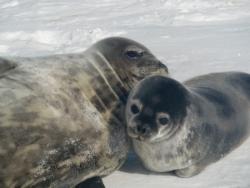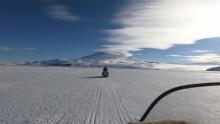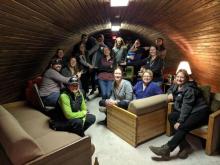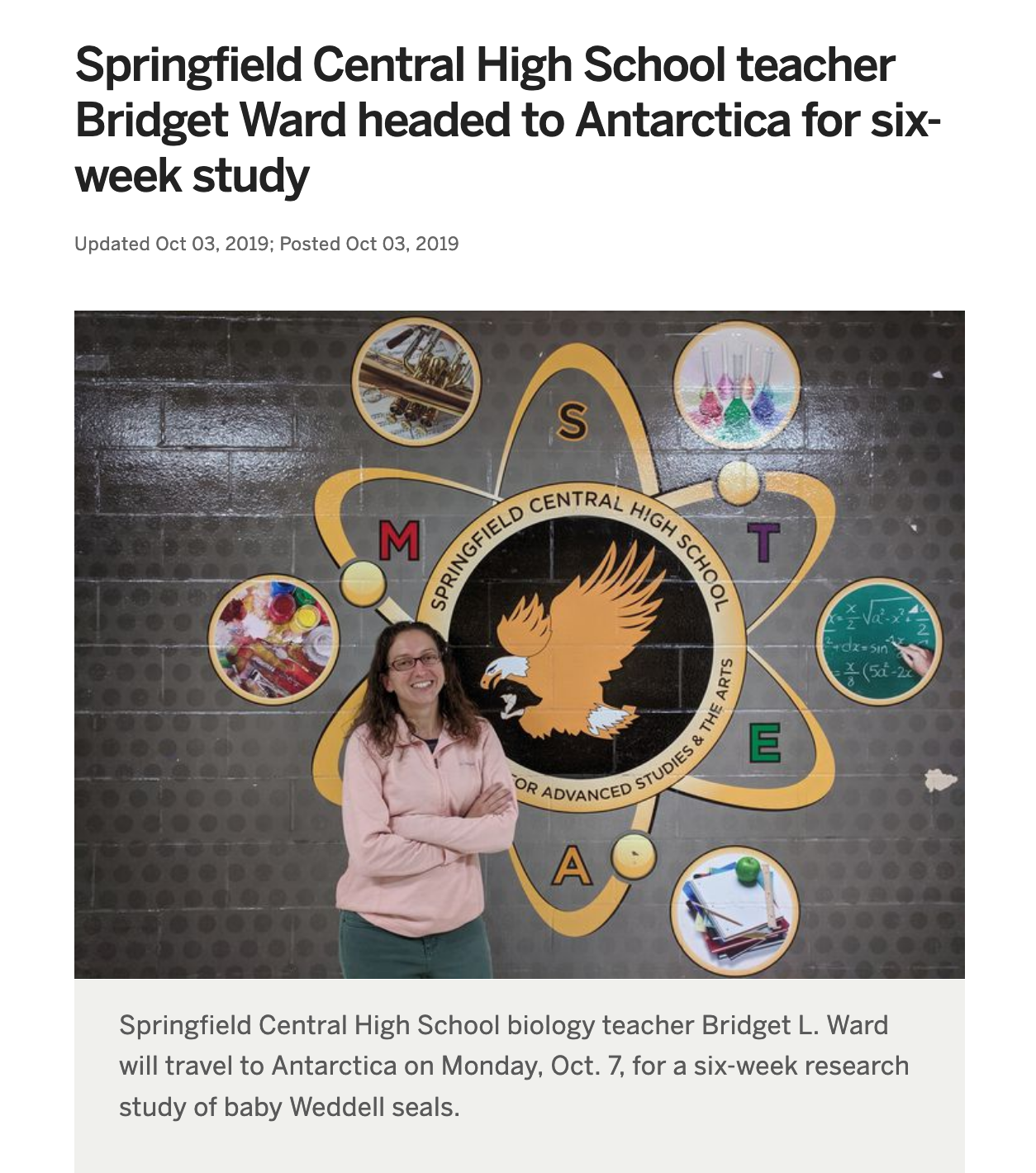Update
Now Archived! PolarConnect event with Bridget Ward and researcher Heather Liwanag studying Weddell Seals from McMurdo Station, Antarctica. This event was broadcast on Monday, 4 November 2019. You can access this and other events on the PolarConnect Archives site
What Are They Doing?

The question is: What does it take for a Weddell seal to survive and successfully make the transition between two extreme environments – above and below the Antarctic sea ice – in only a matter of weeks? To answer this, Cal Poly scientists and a marine mammal veterinarian will venture to Antarctica to study the development of thermoregulation and diving in Weddell seals.
Where Are They?

Latest Journals

Dr. Heather Liwanag is a comparative physiologist at California Polytechnic State University, San Luis Obispo. She is interested in the physiological adaptations of animals to their environment, and the evolutionary processes involved in those adaptations. Much of her research has focused on thermoregulation (the regulation of body temperature) and energetics (metabolic rates) in vertebrate animals, including seals, sea lions, and even lizards. Her current project is studying the development of thermoregulation and diving in Weddell seal pups in Antarctica.





